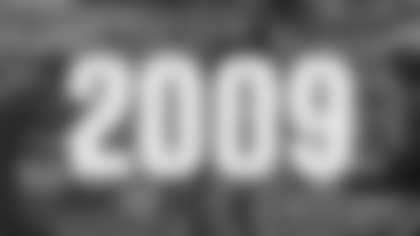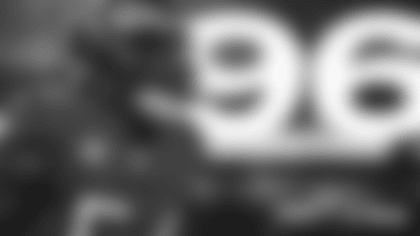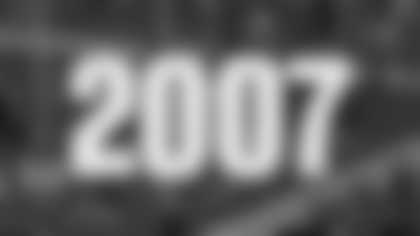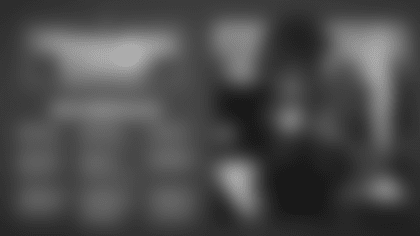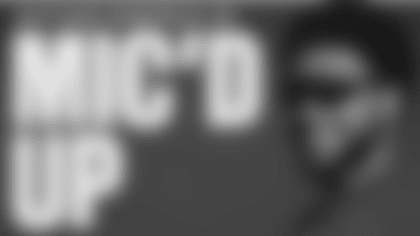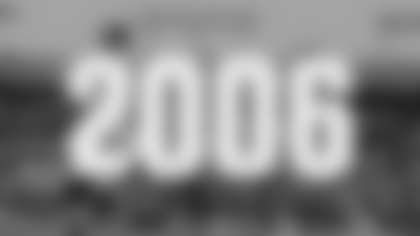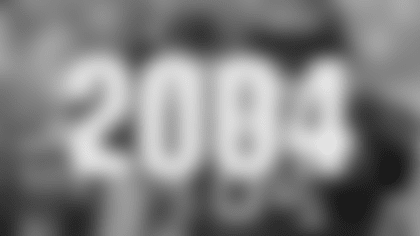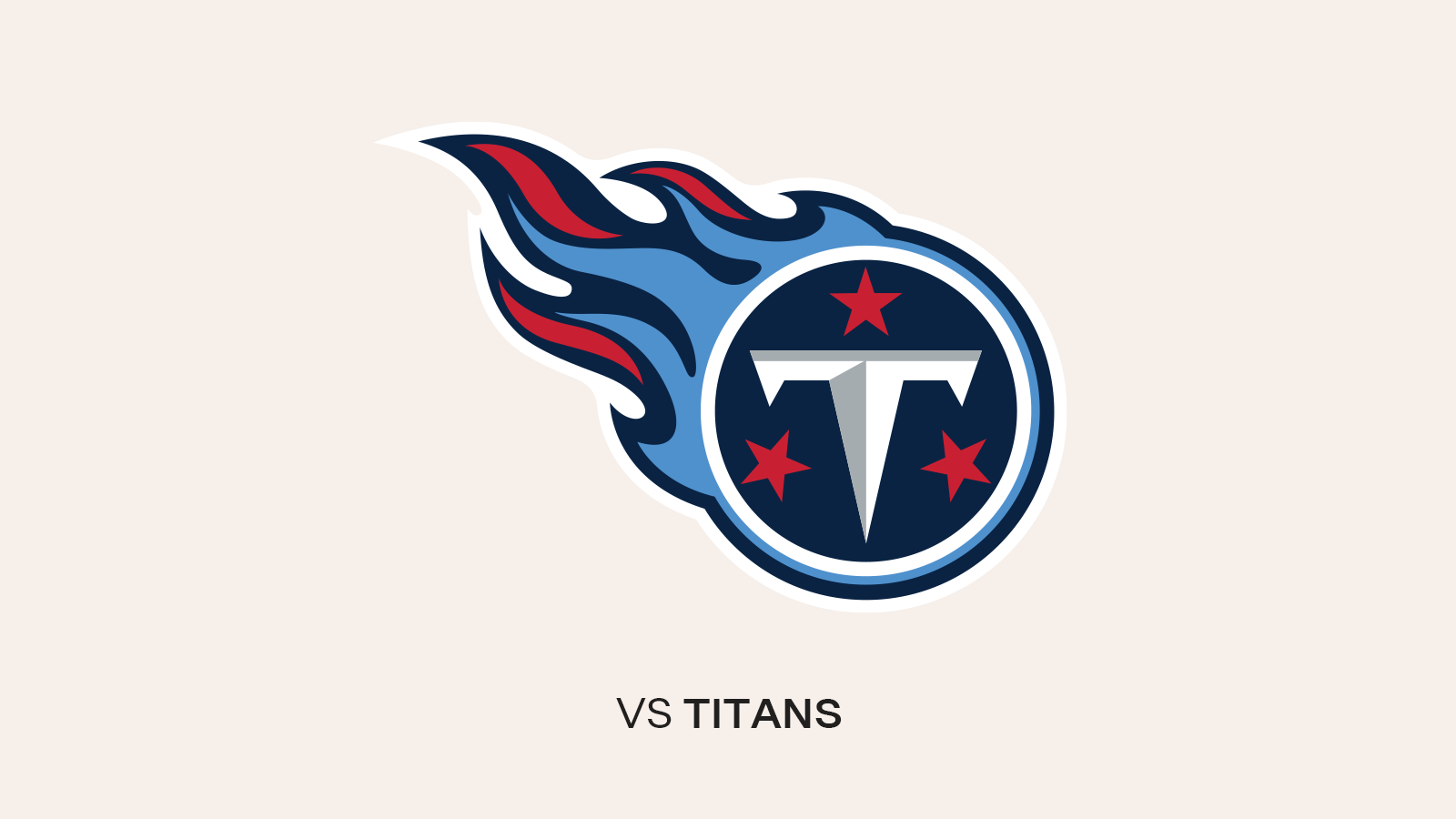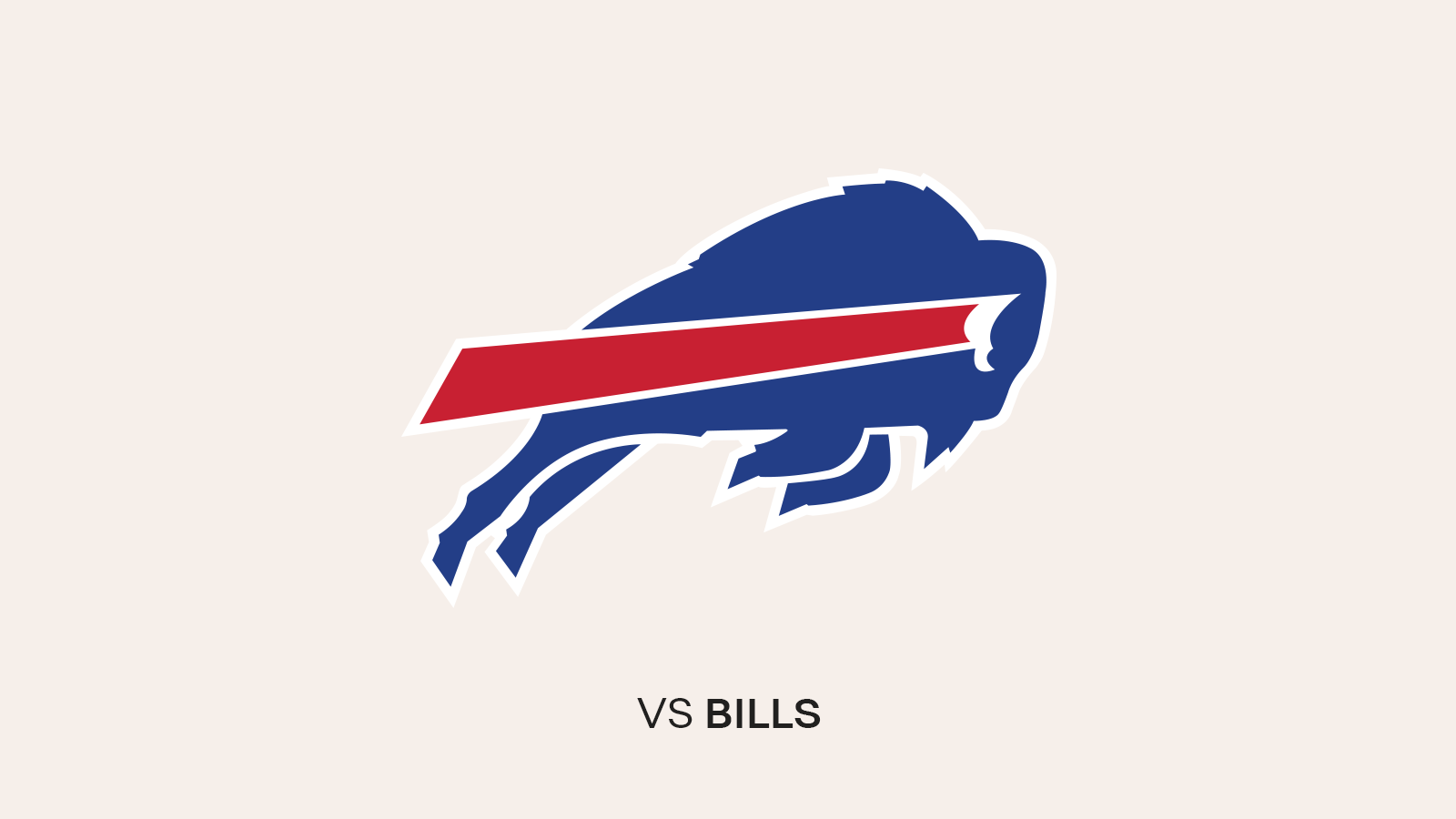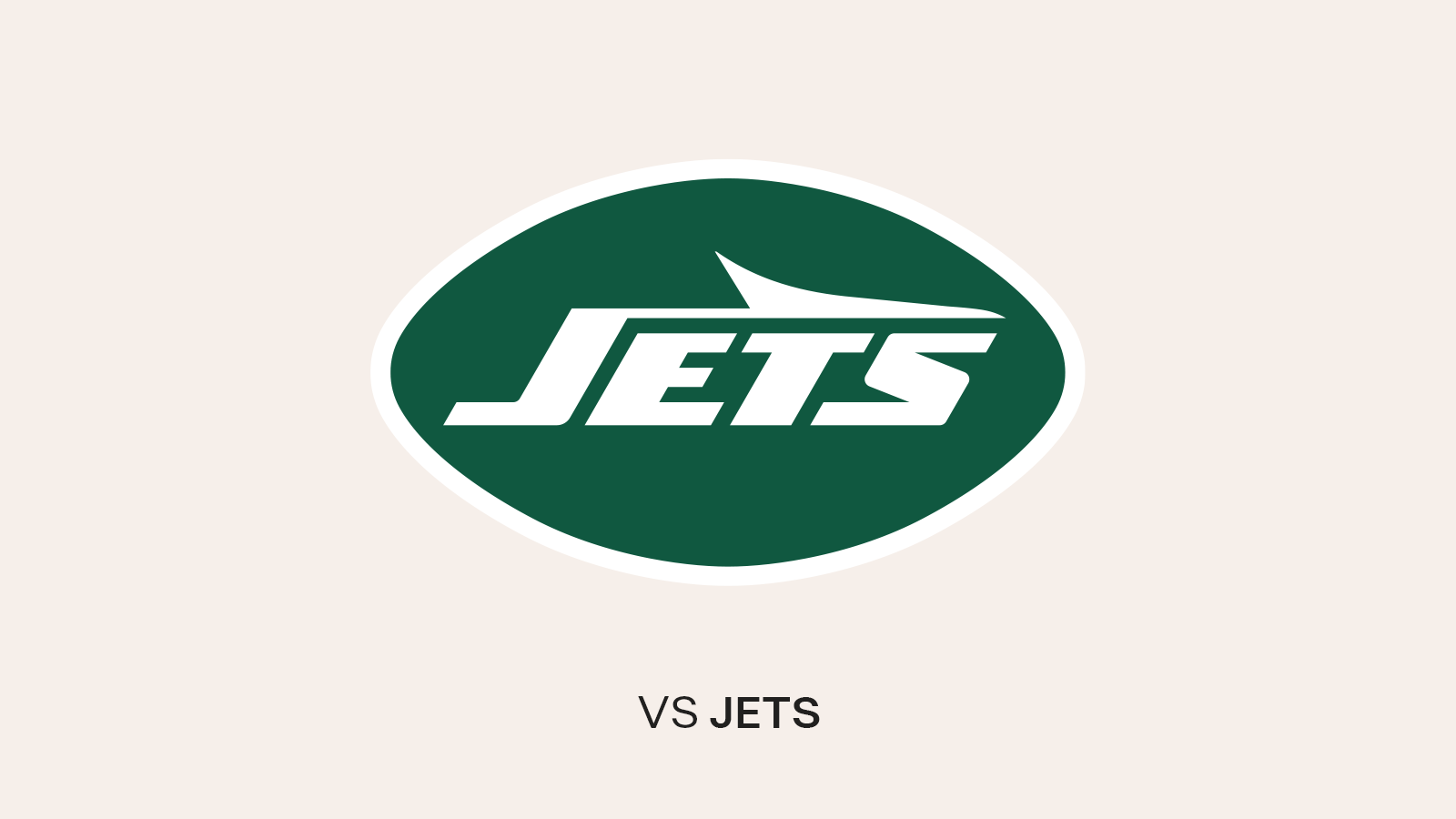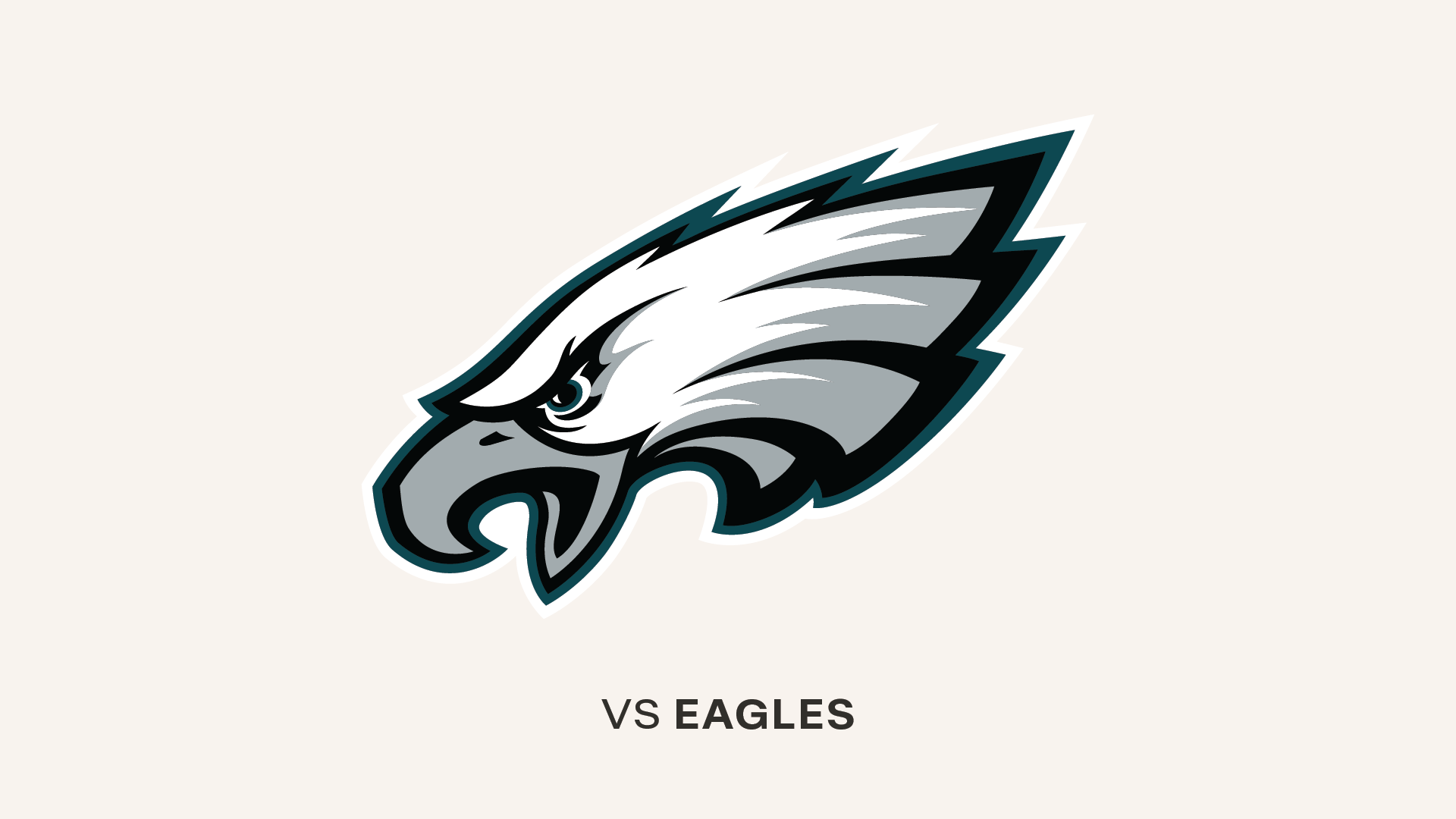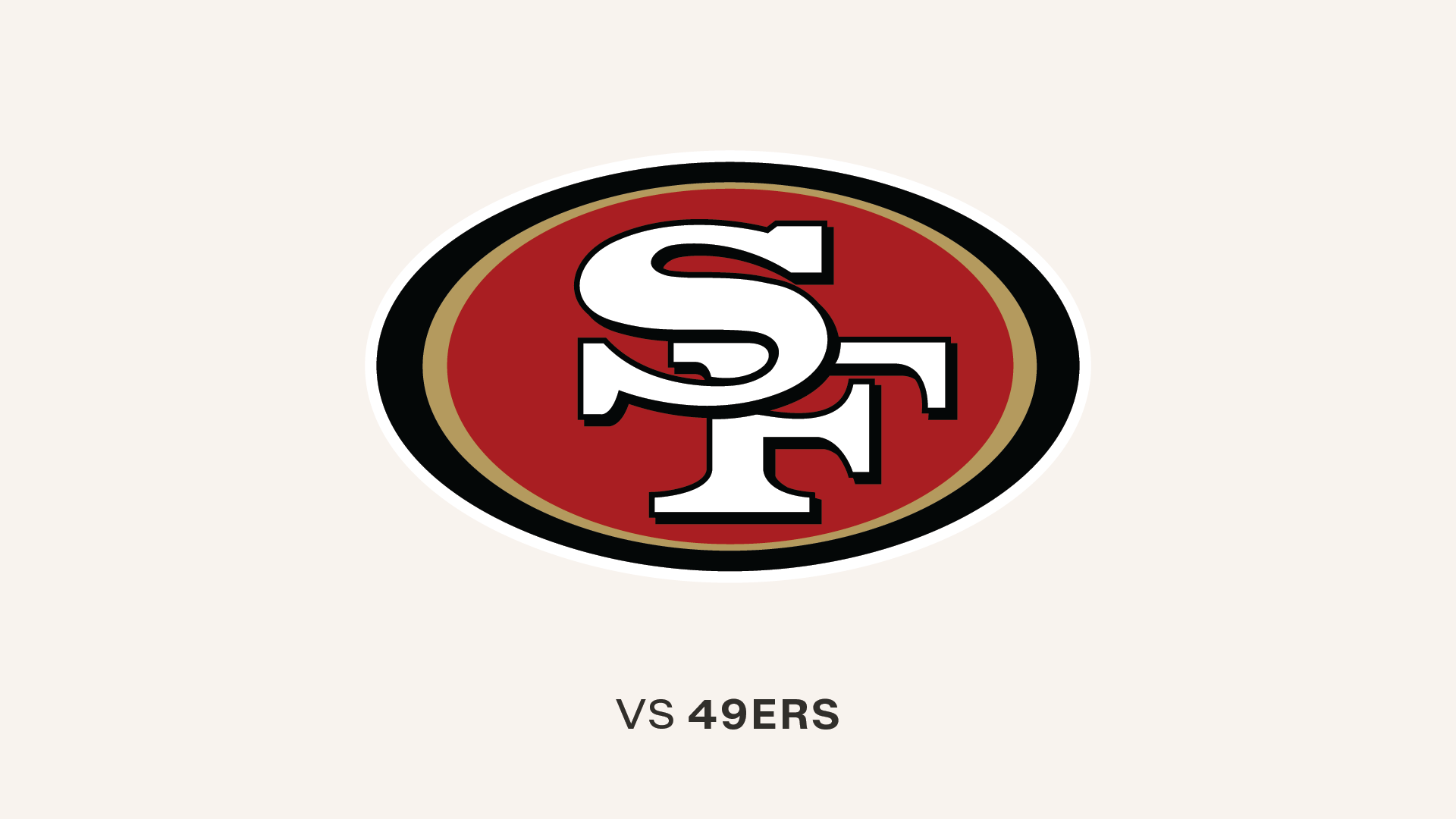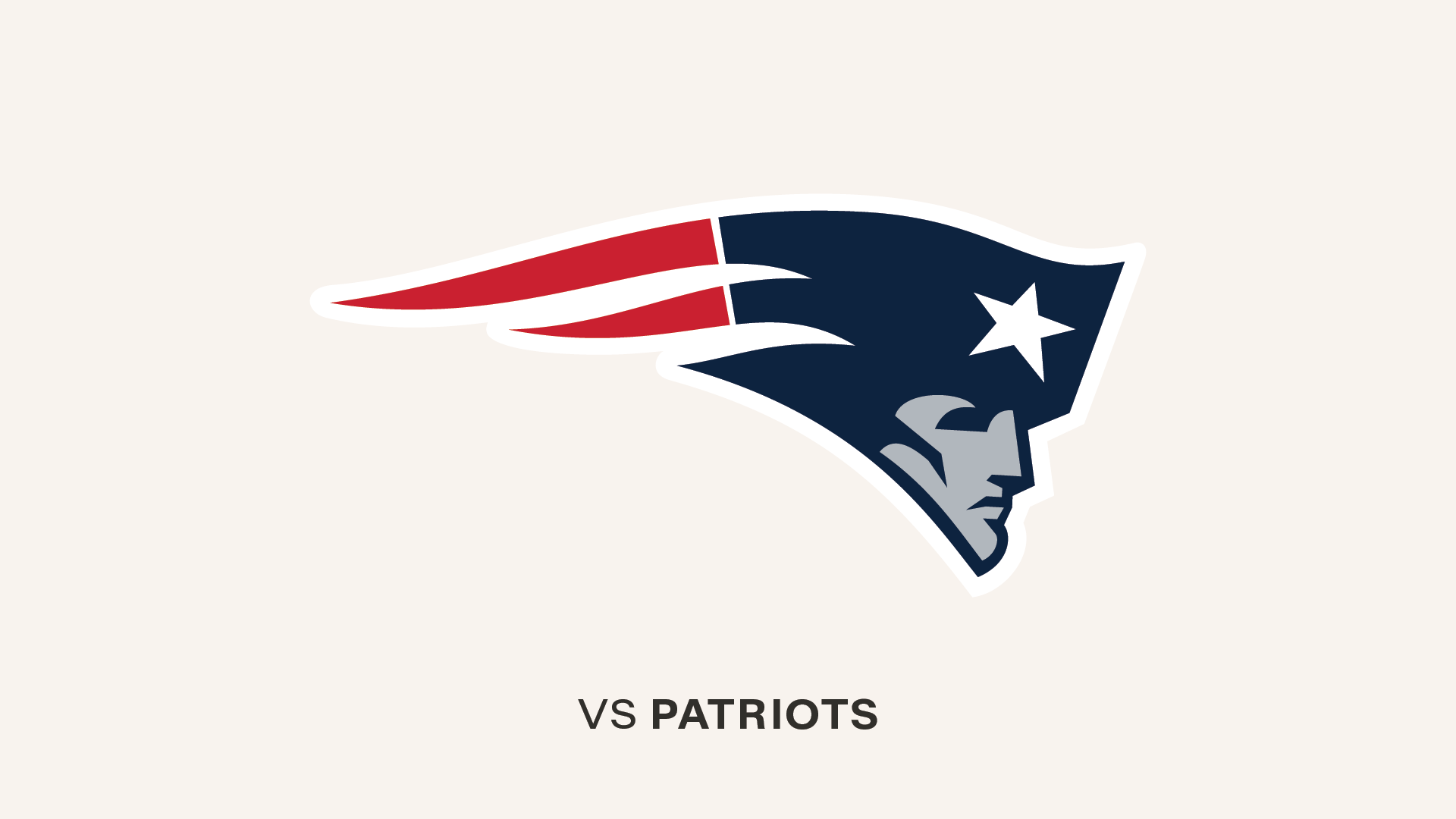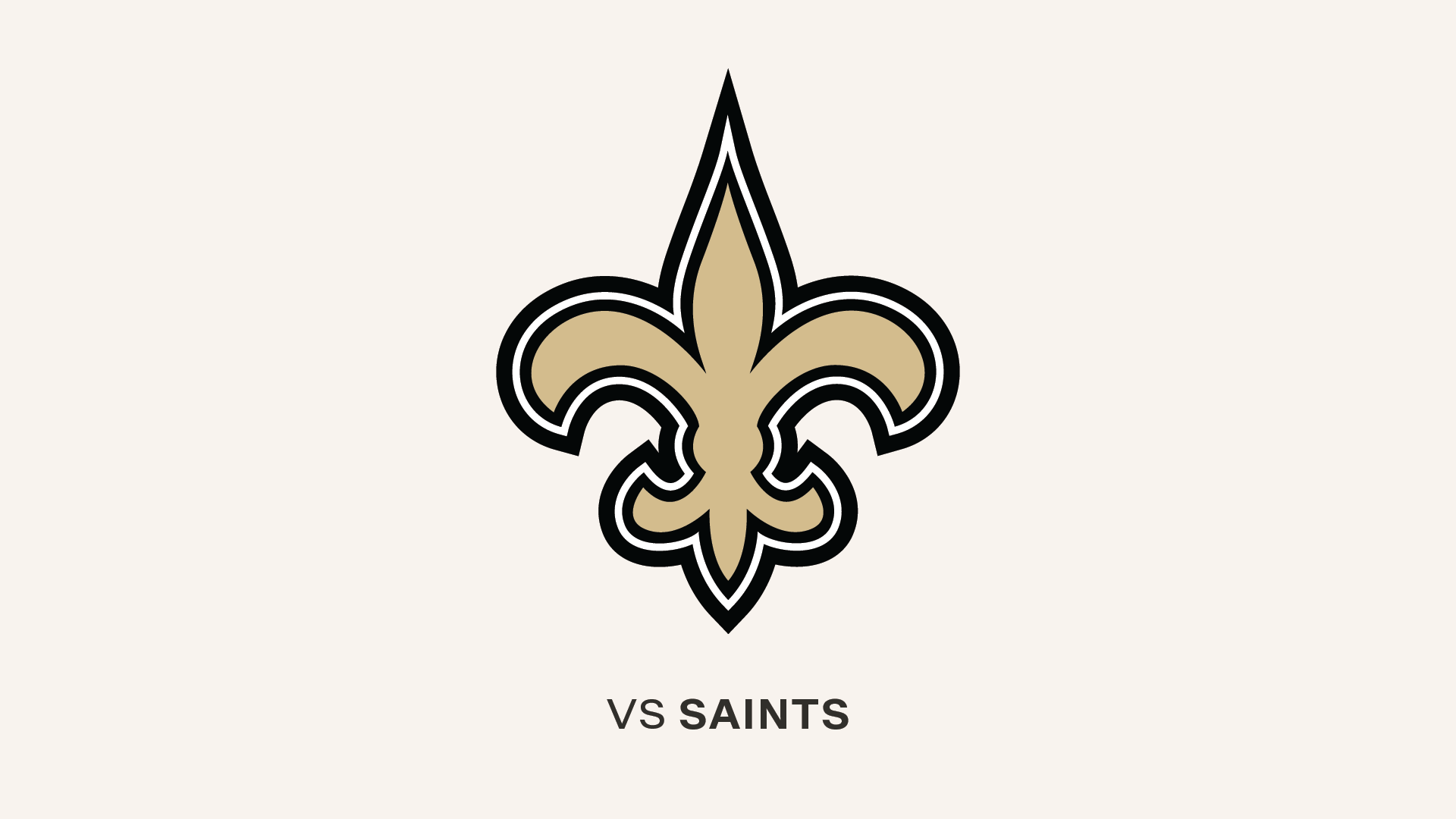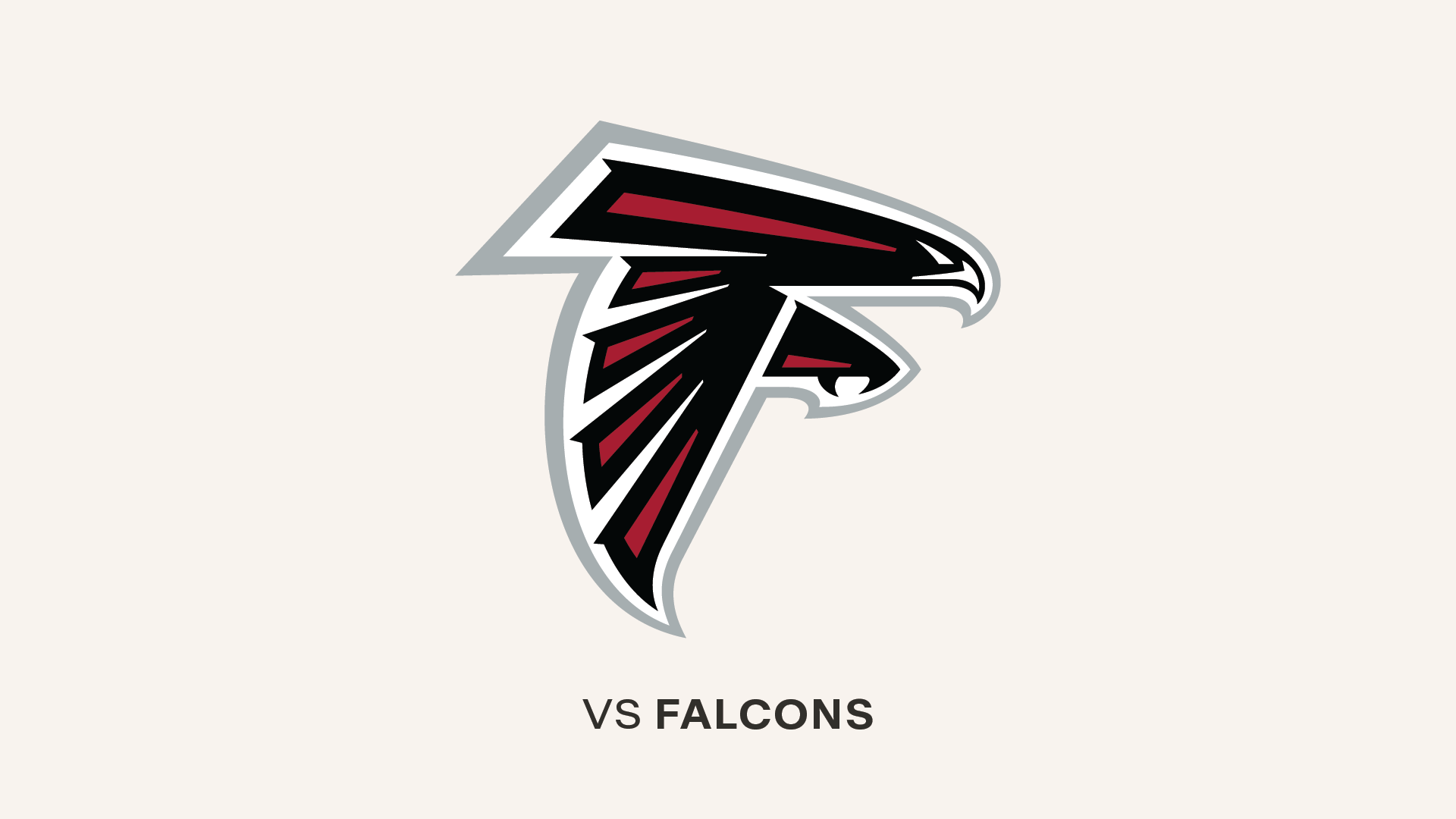The Buc fans' inside source ties up some loose ends (read: mistakes) and then dives into such topics as injured reserve, the draft (of course), kickoffs (of course) and debris on the field
Okay, I'm going to skip my usual "unrelated-intro" approach and dive right in with two questions that arrived after my last column, since both of them have to do with possible mistakes or oversights therein.
I'm highlighting these two right at the top because the first one illustrates that the Answer Man is capable of minor errors (in this case, I didn't give any incorrect information but I did misread the question), and the second one illustrates another point. (It also illustrates that "minor error" thing again, but why beat a dead horse, especially when that dead horse is your friendly neighborhood Answer Man?)
Anyway, that second point is: How flipping *young are some of you people?* The question from Lanny below really made the Answer Man feel old. I'm going to have to start looking into superhero retirement homes soon. Maybe Bob Parr can recommend a place.
First, there was Keith from Keith Bellefonte, Pennsylvania, who sent in this clarification:
Hey answer man, I am referring to the question from Steve Royer of Clifton, New Jersey. His question was about if a field goal attempt hits the crossbar or upright and came back into play, not a forward pass, which was answered in your 2004 article. I would like to know the answer to his question. Thanks, keep up the good work, GO BUCS, Fan since '76.
Answer Man: You know, that's a very good point, Keith. I totally misread that question, and my link was indeed back to an answer about a pass, not a kick.
Fortunately for me, the answer is essentially the same, so I don't feel as if I gave completely misleading information. The crux of the matter in both cases is this: The goal posts and crossbar are out of bounds. Any kicked ball is dead as soon as it hits any part of the uprights, though a field goal is still good if it then continues over the crossbar and through.
Here's the official ruling from Rule 9, Section 1, Article 14 in the one tome that will probably be buried with me, the NFL Rulebook:
If a punt or missed field goal attempt from inside the receiver's 20-yard line touches the receivers' goal posts or crossbar either before or after touching a player of either team, it is a touchback.
A couple things here. One, by "receiver" they mean receiving team. Two, the reason they put in that part about the 20-yard line is because a field goal attempt from farther away that hits the crossbar or goal posts but is missed would return to the spot of the kick. In other words, the team on the receiving end of a missed field goal gets whichever is better, the 20 (on a touchback) or the yard line from which the ball was kicked.
I'm not sure why Rule 9-1-14 mentions punts and field goals but not kickoffs, but kickoffs are included in this rule. I know that because the text of 9-1-14 is immediately followed in the rulebook by an A.R. that addresses kickoffs. An "A.R." is an Approved Ruling, which as the rulebook so dryly puts it, is "an official decision on a given statement of facts and [which] serves to illustrate the intent, application of amplification of a rule."
So here the A.R. says: "A kickoff to start the game hits the goal post before possession by the receivers." And the Ruling says:
Touchback. Any legal kick (scrimmage or free kick) which touches the receivers' goal posts or crossbar other than one which scores a field goal is a touchback.
The Rulebook even allows for the possibility that a kick could hit the kicker's goal posts or crossbar, though the Answer Man has never seen that happen. That, by the way, would be a safety. The A.R. on this one does give a plausible scenario in which this could happen: "Fourth-and-10 on A10. A punt is blocked and the ball rebounds, hits the goal post, and rolls into the end zone where receiver B1 falls on it. The ruling:
Safety. Ball out of bounds.
Okay, I think that thoroughly covers Steve's initial question. Thanks for getting me on track, Keith. The Answer Man is always open to help from the readers in getting these things right.
Of course, there are also times in which the Answer Man is willing to take it on the chin (no jokes, please) for a small typo, but the correcting e-mail brings up questions of its own. That's the case here with Lanny Turner of Oviedo, Florida, the same cruel reader who made me feel so AARPish. Check out his question:
Need further explanation...Your answer to the question about QB Steve Walsh said he was a free agent from the St. Louis Cardinals. Do you mean the St. Louis Rams or the Arizona Cardinals?? Or were the Cards actually in St. Louis at one point??? Or did you actually mean what you wrote and he really was a free agent from MLB????
Answer Man: Notice how each question gets one additional question mark, as if Lanny was growing more incredulous with each possible interpretation of my original answer?
Well, young (I hope) Lanny, yes the Cardinals were in St. Louis at some point. In fact, they were there for a lot of points during the years of 1960-87. The franchise was originally the Chicago Cardinals, which was one of the 14 teams that formed the NFL in 1920. The Cards moved to St. Louis in 1960, giving that town a pair of Cardinal squads. Obviously, the baseball Cards are renowned as one of the most successful and beloved teams in MLB history.
The football Cardinals are no longer particularly beloved in St. Louis, as they chose to relocate to Phoenix in 1988. Now the folks in STL root for the Rams, as you mentioned, having attracted that former Los Angeles team to the Midwest in 1995. The former St. Louis team was known as the "Phoenix Cardinals" for six years before transforming into the "Arizona Cardinals" in 1994.
Of course, all of those dates also serve to drive home your underlying point, Lanny – that the Answer Man messed up. I typed "St. Louis Cardinals" where I should have typed "St. Louis Rams," since the season in question was 1997 and the Cards had been in the desert for a solid decade by then.. Whoops. My bad. No, Steve Walsh did not come to the Buccaneers from the baseball Cardinals – the fastball wasn't his specialty. (By the way, there was a former NFL player who later played for the baseball Cardinals: Brian Jordan.)
So, Lanny, is the current generation of NFL fans unaware that the Arizona Cardinals used to be the St. Louis Cardinals? Man, that would be weird for the Answer Man. The Cards didn't enjoy a huge amount of success in their almost three decades in Missouri – two division titles, three playoff appearances, no playoff wins – but I can still remember some of their players. Mel Gray, Roy Green, Pat Tilley, Terry Metcalf, Stump Mitchell. Heck, did you see that guy inducted into the Hall of Fame last weekend, Roger Wehrli? He was a St. Louis Cardinal!
But, yeah, you caught me, Lanny. And as long as we're discussing the Answer Man's deficiencies, let me finish the introduction with this thought: Help! You all have responded so enthusiastically to the two columns since my return that the mailbag is bursting at the seams. I drew the entire set of questions from this column from the two days after I posted the last story. Obviously, that means a lot of e-mails are going unanswered, and for that, I'm sorry. Keep the questions coming and I'll get to as many of them as I can.
Now, on to this week's Q&A.
**
- Zach of Salem, Indiana asks:
**Answer Man! I recently read your response to a question from Austin of Odessa, Texas about the advantages/disadvantages of injured reserve. And, way back in the day, I asked you a question (that you answered subsequently in both his and mine) about a player being released from IR when he is released from his team.
Well, this question is regarding a scenario that has probably never happened, but it is still interesting. What if a player is placed on IR, gets released, and finds his way back to his former team later in the season? Is he still on IR for that team? Or would it even behoove the team to sign him back? I'm probably wasting your time, but thanks for reading this!**
Answer Man: Zach, Zach, Zach, Zach, Zach…"wasting my time?" I'm the Answer Man. You're not wasting my time with a question about NFL rules and procedures. This is not an irrelevant or simple question, either. On one hand, injured reserve works very simply, as I outlined in the last column – if a team places a player on injured reserve, he cannot play for the team again that season but he no longer counts against the 53-man roster. On the other hand, there are a lot of little subtleties to the process that are rarely elaborated outside of NFL personnel offices.
For instance – and we're inching closer to your answer here – a player can be released from injured reserve, and he can play again that same season, for another team. Excuse my overuse of italics, but those are crucial points. Note that I have only said that the player could play again that same season for a different team.
Now, there are in effect two types of injured reserve, major and minor.
If a player is placed on IR with a "major" injury, he is most definitely expected to miss the rest of that season, and to remain on injured reserve that whole time. Example: A torn ACL in the knee. Since that injury will require surgery and up to a year of recovery time, there's no point in planning for a point later in the season in which the player might return.
If a player is placed on IR with a "minor" injury, there remain options for him to return that season. Example: A high ankle sprain. If a player with that injury went on injured reserve but subsequently recovered, he could be waived from injured reserve. Or he could reach an injury settlement with the team, essentially getting his release before he is fully healed but also receiving some portion of the salary he would have been paid.
Those two release scenarios work very differently for the original team. If the player is placed on injured reserve by a team, he cannot under any circumstances return to play for that team during that season (including the playoffs). However, if he is released with an injury settlement, he is allowed to return to play for that same that season, but only after 10 weeks have passed. The Bucs did just this with running back Earnest Graham in his 2003 rookie season (Graham came back to the practice squad in December).
Now, a player that is waived from injured reserve or released with an injury settlement can play that same season for a different team as soon as he is proved healthy. The part of this question that the Answer Man needed help on was this, which I think you sort of meant, Zach: If a player is placed on injured reserve, then waived, then signed by another team, then subsequently released again, could he then come back and play for his original team that season.
The answer is no. As I sort of spoiled above, there are no circumstances that allow for a player to return to the field that same season for the team that puts him on injured reserve. Can't happen.
By the way, it wasn't always this way. Before a rule change in the early '90s, players could return from injured reserve to play that same season for that same team. However, this made it too easy for teams to "stash" players, clearing off a roster spot on the active roster without having to release another player.
Okay, that's 600 words on your innocent little question, Zach. Now I think it's me who is wasting your time. On to the next one.
**
- Larry Anderson of Visalia, California asks:
Hey there AM, With the draft coming up I wanted to know what years did the Buccaneers end up keeping the most draftees on their roster, and what year did they keep the least. Thanks Again & GO BUCS!!!
Answer Man: That's a very good question, Larry, but the answer is a little slippery. The problem comes in defining the term "keep." Does it count, for instance, if the Bucs draft a player, don't keep him that year but get him back the next year (think Mark Jones)? Or if they keep him on the practice squad for all or most of his first year and then he eventually makes the team (think Charles Bennett)? Or if the player is on injured reserve as a rookie but later makes the team (think Torrie Cox)? Or if the player does make the team out of training camp but hardly plays and is later released (think Travis Stephens)? Et cetera.
It's arbitrary, really. For instance, one could define "keeping" the player as having him on the active roster at some point during his rookie season. That certainly sounds reasonable, but it's a bit misleading, because it really is pretty rare for a player in the first, say, five rounds to not make the team.
How rare? The Answer Man did a study almost exactly two years concerning every Buccaneer draft pick from 1976-2004 and the percentage of players taken in each round who made the team as a rookie (if that sounds like riveting reading to you, you'll find it here in Series 2, Volume 4) and the numbers are very high. In fact, adding in the players from the last two seasons, only two out of the 93 players drafted by the Bucs in Rounds 1-3 all-time did not make the team as rookies. And even extending it down to the fifth round, that original study from two years ago showed 131 of 145 players, or 90.3%, of all players selected making the active roster as a rookie.
Again, that's misleading. For instance, the Bucs drafted tackle Chris Colmer in the third round two years ago. He was on the active roster his entire rookie season but never saw action in a game, and he spent this past campaign on the non-football-illness reserve list. Now, Colmer may return at some point to become a great player for the Buccaneers, but to this point that third-round pick hasn't netted the team any on-field contribution. Still, Colmer would make the list under that set of criteria.
Then again, who am I to say that shouldn't count. Colmer was one of the Buccaneers' backup offensive tackles during that fine 2005 season; one of the reasons he never played is that, for the first time in team history, the Bucs entire starting offensive line stayed intact for all 16 starts. If the Bucs didn't have Colmer that year, perhaps they would have had to pay more salary or use more cap space on a different reserve offensive tackle.
So if virtually every player picked in rounds 1-5 is "kept" in that rookie season, then finding the answer to your question, Larry, would be about as simple as finding which years the Bucs had the most and least picks. In 1987, for instance, the Buccaneers made 20 picks, 10 of them in the first five rounds. (Further complicating this is the fact that the draft used to be 12 rounds long but is now just seven, giving those earlier drafts an obvious advantage.) Nine of those first 10 picks and 15 of the 20 overall made it to the Bucs' active roster at some point during the 1987 season (though LB Don Graham, P/K Greg Davis and QB Mike Shula hardly played).
In contrast, the Bucs' 2003 draft produced only six selections, five in the first five rounds. Though that was quite far from a bad draft – it produced Chris Simms, Dewayne White, Sean Mahan and Torrie Cox – it wasn't deep in numbers, with just five players who made it to the active roster.
One other note on those two contrasting seasons before we stop explaining how we're not going to answer your question, Larry. The 1986 Bucs team went 2-14, duplicating its 1985 record and bringing on a coaching staff purge. The 2002 Bucs team won the Super Bowl with a head coach in his first season. Given that, it's fair to say that the 1987 team had more room for roster improvement than the 2003 team.
Considering those points, perhaps we should massage Larry's question a bit and determine which were the Bucs' best and worst drafts of all-time, taking into account total impact of the players selected. But we've sort of done that before (in Series 2, Volume 2 and there's not a lot to add to that conversation. What Larry's question asks, essentially, is which draft has produced the most keepers, not the best ones.
So let's do this instead: Let's set some arbitrary criteria and see which draft comes out on top. Here's my thinking: The first chance a player gets for complete free agency is after four seasons, so it's reasonable to expect a successful draft pick to be in town for at least four years. (Yes, I know this free agency system has only been around since 1993, but work with me here.) A four-year span would cover 64 games, but injuries and lineup issues can cost players to miss games here and there. So let's knock 24 games off of that and use this criteria for a "keeper:" 40 games.
So, the question (finally!) is, which Buccaneer draft produced the most players who would eventually play at least 40 games for the franchise, and which one produced the least.
Answer Brain calculating…calculating…calculating…done.
We have a tie! The 1987 and 1997 drafts both produced seven players who would go on to play at least 40 games as a Buccaneer. (Ronde Barber, a Class of '97 grad, is still adding to his total.) When you look at the sheer number of players drafted each year, the 1997 feat is probably more impressive. As mentioned, the Bucs drafted 20 players over 12 rounds in 1987. In 1997, the Bucs drafted 10 players over seven rounds, and a remarkable 70% of those picks were at least moderate "hits:" Warrick Dunn, Reidel Anthony, Jerry Wunsch, Frank Middleton, Ronde Barber, Alshermond Singleton and Patrick Hape. (An eighth player in that class, CB Al Harris, has also become an established NFL player, though not with the Buccaneers.)
The seven players who made the list from the 1987 draft were Vinny Testaverde, Ricky Reynolds, Winston Moss, Mark Carrier, Ron Hall, Bruce Hill and Harry Swayne.
The 1980 draft was not far behind, with six qualifiers: Ray Snell, Kevin House, Scot Brantley, Jim Leonard, Gerald Carter and Andy Hawkins. It's worth nothing that Leonard, Carter and Hawkins were seventh, ninth and 10th-round picks, respectively.
We should also note that the 2005 and 2006 drafts could not show up in this analysis, as the highest number of games any of those players could have appeared in by now is 32. It is probably also unfair to judge the 2003 and 2004 drafts yet, as there are a number of players from those classes who have not yet reached 40 Buccaneer games but certainly could in the future. That group includes Jeb Terry, Mark Jones and Chris Simms.
So, excluding the last four drafts, the two draft classes that produced the fewest 40-game Bucs were 1989 and 2002. That '89 draft is tough to defend, as the club picked 13 players that year, including ones in the first, second, fourth and fifth rounds (the third-round pick was traded to New England for another low-impact player, WR Stephen Starring). The one player who did make it to 40 games out of that group was LB Broderick Thomas, the first-round pick. The Bucs next five picks were WR Danny Peebles (23 Buc games), CB Anthony Florence (0), RB Jamie Lawson (11), P Chris Mohr (16, though he did enjoy a long NFL career) and LB Derrick Little (0).
The 2002 draft at least has the excuse of zero first or second round picks, and those are the players most likely to stick with a team for an extended period. The third and fourth-rounders, WR Marquise Walker and RB Travis Stephens, failed, but the Bucs did astutely flip Walker to the Arizona Cardinals for one nice year of RB Thomas Jones. Fifth-rounder Jermaine Phillips is the lone qualifier from that draft, but five of the eight players the Bucs took that year were in the sixth round or lower.
Alright, we're really off and rolling. Draft-related topics tend to do that for us, so let's knock off a couple more before moving on.
**
- Luca Pasculli of Wilderen, Belgium asks:
Yow AM, Who was the 1st round pick in the year the Bucs won the Super Bowl? Or didn't we have one that year? Did he play? Thanks! Greetings out of snow-less Belgium.
Answer Man: Yow, Luca (I guess that's a Belgian thing).
Yeah, I know this one's easy. I needed a little mental sorbet after that last very lengthy one. Bear with me.
As I mentioned in the last question, the Bucs did not have a first (or second)-round pick in 2002, the year they went on to win the Super Bowl. That was Head Coach Jon Gruden's first season with the team, and to get him the Bucs had to trade those two picks, plus a first in 2003 and a second in 2004, to the Raiders. That worked out okay, huh?
**
- John Tibby of Lithia, Florida asks:
Answer Man, what college have the Bucs drafted the most players from? Which of the state schools have the Bucs drafted from the most?
Answer Man: I have a feeling I've answered this one before, but to be honest, it's easier to just throw it out there again than to go searching through the archives. Call this one a "Quickie" that got mixed in with the general population.
Two schools have tied for the honor of producing the most Buccaneer draftees, at 11 apiece: Alabama and Miami (the one in Florida, not the one in Ohio). Those two are just a player ahead of Tennessee, which has had 10. Oklahoma just got its ninth Buc draftee last year in Davin Joseph, putting the Sooners alone in fourth place. Florida, Florida State, Nebraska and USC are all tied for fifth with eight each.
So that obviously answers your second question, too. Miami has a three player lead on Florida and Florida State in Buccaneer draft history.
Just to wrap up the loose ends, here are the 11 players drafted by the Bucs out of each of those two leading schools, in chronological order:
- Alabama – DE Charley Hannah (1977), RB Johnny Davis (1978), CB Jeremiah Castille (1983), NT Curt Jarvis (1987), QB Mike Shula (1987), RB Kerry Goode (1988), P Chris Mohr (1989), LB Keith McCants (1990), DE Eric Curry (1993), TE Patrick Hape (1997), DT Anthony Bryant (2005)
- Miami – LB John McGriff (1978), CB Gene Coleman (1980), NT Tony Chickillo (1983), DE Fred Robinson (1984), QB Vinny Testaverde (1987), LB Winston Moss (1987), QB Craig Erickson (1992), WR Lamar Thomas (1993), WR Horace Copeland (1993), DT Warren Sapp (1995), LB Nate Webster (2000) You know, as I look more closely at this, I think Miami might have the title all by itself. Why? Well, in addition to the picks listed above, the Bucs also selected Hurricane nose tackle Dan Sileo with a supplemental draft pick in the summer of 1987. Should that count? Well, it cost the team a very real third-round pick in the 1988 draft (that's how the supplemental draft works), so the Answer Man's thought is, yes, it counts.
Thus, Miami has 12 and is our new champion. At least until April. Anybody know if there are any hot prospects coming out of Miami or Alabama this year?
**
- Justin of St. Petersburg, Florida asks:
Answer Man, welcome back. I have taken your advice and resubmitted my question in hopes it'll be answered. I think it has a good shot since in your last column before your hiatus you said you were going to put it in. So here we are. Which player and coach has worked together the most? I have a feeling it'll be Dan Marino and Don Shula, but that's just a guess, and would dipping into the college ranks make a difference if perhaps a recently promoted college coach drafts his player onto his new pro team?
Answer Man: Thanks, Justin.
And thanks for re-submitting your question. That is a good one, as I must have felt back in July, too. Um, I guess I should go back and peek at the column to see whom else I've left hanging. I must say, you presented this very nicely; you could have chosen to bust my chops for not getting back to this one originally.
Anyway, now that I've cleansed my palate with those two easy ones on the draft, I'll take on your research-oriented question. It's possible I could get the answer with a quick e-mail exchange with the always-helpful, fabulously-organized Elias Sports Bureau, but I've decided to work this one out myself. I'm still a bit rusty and I need to get back into the books.
Okay, research done.
By the way, that was a nice guess on your part. It would have been my first guess, too. Just so you know, that pair played/coached 186 games together, which is a very high number, though not that close to the record.
(Two things before I go one. One: I am only considering regular-season games here. That's my methodology; that's the breaks. Anyway, when you see the answer I think you'll agree that the winners probably did alright in the playoff department, too. Two: I'm not going to answer the part of your question about college coaches. That's a whole different avenue of research that isn't my specialty. The question is: The longest coach/player combination, in terms of games played.)
So, like I said, Shula-Marino was a good guess, and for the obvious reasons. Marino only played for one team. Shula was the coach of that team for a long time. But Marino played a total of 242 games in the NFL and for 56 of them, Jimmie Johnson paced the sideline.
So, using that formula – player with same team for a long time + that team coached by one of the few men who last more than a decade in one spot – do you see any other obvious guesses? After I had found the answer, I bounced your question off a friend here is quite strong on NFL trivia, and his first guess was the same as yours. His second was Terry Bradshaw/Chuck Noll.
Think he's on to something there? Bradshaw played for the Pittsburgh Steelers from 1970 through 1983 and, yes, Chuck Noll was the head coach for that entire span. Problem is, Bradshaw "only" played in 168 games, which doesn't get him anywhere near the record. You might find the same thing if you consider Bart Starr and Vince Lombardi.
Ah, but we've got something in Chuck Noll. Considering his long tenure with the Steelers – 23 years, unheard of these days – and the strength of the team's roster for much of that time, there was bound to be some Pittsburgh player who put up a huge number of games under Noll.
And that player was Hall of Fame center Mike Webster. Webster actually played 245 career games in the NFL, which puts him just outside the top 30 all-time. But the last 25 of those were with the Kansas City Chiefs. From 1974 through 1988, Webster played 220 games under Noll, making them the longest-running coach-player combination in league history.
And believe me, I checked out all the possibilities. Essentially, I had to take every player who had ever played 220 or more games and see if some number of those games greater than 220 occurred under the same coach. None of them did.
In most cases, that was because of the inevitable coaching turnover. There are a decent number of players on the list above Webster who played more than 220 games for one franchise – Jerry Rice, Bruce Matthews, Darrell Green, Jim Marshall, to name a few – but there were enough coaching changes during their respective tenures to keep them from piling up a huge number with any one coach. The Vikings switch from Norm Van Brocklin to Bud Grant in 1967, for instance, derailed several possibilities, such as Marshall and Carl Eller. Some guys, like kicker Jim Bakken, played a ton of games with one team (Bakken played 234 NFL games, all for the Cardinals) but that team had multiple coaching changes.
But Noll was the only NFL coach Webster ever knew, and the two were together for longer than any other coach-player combo in league history.
**
- Stephen Dollins of Topeka, Kansas asks:
Please settle this once and for all: Has FB Mike Alstott actually retired from playing football, or will he return for one more season with the Bucs?
Answer Man: You know who can settle that "once and for all," Stephen? Mike Alstott.
The Bucs' great fullback stated repeatedly at the end of the 2006 season that he had not yet made up his mind between returning and retirement, and that he wasn't rushing the decision. As of now, midway through February, he has not announced a decision. If Alstott does choose to return, he and the team will have to work out a contract, as he is due to become a free agent on March 2.
We will certainly keep you posted here at Buccaneers.com (I think I can speak for our editor on that one).
Since I hate to include a question just to say I don't know the answer, allow me to throw in an Alstott factoid that you didn't even request. Hmmm, what should we go with? Bucs' win-loss mark when he scores? His marks in the Bucs' record book?
Here we go. Since it's Pro Bowl week, we'll grab something from that game. Did you know that Alstott, who has more all-star appearances than any other offensive player in Buc history (6), holds the Pro Bowl record for rushing touchdowns in a single game? He set that mark in the 2000 Pro Bowl (following the 1999 season) by running it in three times in the NFC's 51-31 victory.
**
- Michael Horseman of Salisbury, Maryland asks:
Hey Answer Man! Say on a kickoff to the other team, the kicker completely misses the kick and lands on his rear end. Is the ball, still sitting on the tee, considered in play? Thanks!
Answer Man: I'll tell you what, kickoffs seem to be endlessly fascinating to those of you who read and respond to my columns. I think we've dissected this simple act about a thousand ways.
Here's 1,001. The kicker misses the ball completely. What then?
Well, there's really not a lot of mystery here. The kicking team would be whistled for being offside, the ball would be moved back five yards and they would try it again.
On a kickoff, the players on the kicking team are not allowed to cross the free kick line before the ball is struck. They all time their approaches very close to the kick however, so it's hard to imagine 10 guys not going offside as the kicker whiffed and landed on the seat of his pants. You can't say the ball is live because the play does not begin until the ball is kicked.
Now, there are two exceptions to the offside rule on a kickoff. If the ball keeps blowing off the tee and the kicking team is forced to use one of their cover men as a holder, that player can be lined up offside as he holds the ball. Still, you'd have nine other guys go offside in the same scenario.
The kicker is also allowed to go past the line with everything but his kicking foot. This is a nod to the simple mechanics of a kick, as the kicker's plant leg may come down in front of the ball as the other leg swings through. A kicker often goes over the line with a good portion of his body while performing an onside kick. As long as his kicking foot stays behind the line until it hits the ball, this is okay. That really wouldn't change anything in your scenario, though, as the kicker in your question swings his foot past the ball as he misses it.
The Answer Man can't see how it's possible, but let's say that somehow the kicker misses the ball without going offside, and all of the cover men stopped before crossing the line, too. At this point, nobody has committed a penalty, but the kicker better hurry. From the moment the back judge gives the football to the kicker, he has 25 seconds to kick it off. If he swings and misses but nobody goes offside, he is probably going to violate that 25-second clock before getting it off.
**
- Troy of Springfield, Illinois asks:
Oh great and wise Answer Man, I bow before your wisdom to ask a question. That question regards kickoffs going out of bounds. Why is it that sometimes when a kickoff goes out of bounds the ball is brought to the forty yard line and other times it is placed where it went out?
Answer Man: See? Kickoffs. We can't get enough of 'em.
Troy, the question is a little light on information. There are some ways in which a kickoff that goes out of bounds is not placed at the 40-yard line, but they don't come along that often. It seems as if you're saying you see this happen pretty frequently, but I wonder. There really is no reason for the ball to not be placed at the receiving team's 40 on your garden-variety kick out of bounds.
But I guess the probable answer to your question is that the receiving team gets to choose whether it wants the ball at the 40-yard line or where it went out of bounds when the kicking team is flagged for this infraction.
Let's look at a few possible scenarios.
- The kicking team kicks off and the ball rolls out of bounds without being touched at the receiving team's 10-yard line. That's a penalty, and the infraction actually states that the new line of scrimmage will be 30 yards beyond the free kick line. That's usually the receiving team's 40 because the kicking team lines up at its own 30, but if a penalty had previously moved the free kick line back to, say, the 25, then the new line of scrimmage would be the receiving team's 45.
Now, here the receiving team CAN choose to take the ball at their own 10, but why would they? They would obviously choose the 40.
- The kicking team kicks off and its such a bad kick that it angles out of bounds at the receiving team's 45. Now, in this case, since you have the choice, you would take the 45. But how often do you see this happen, really.
- The kicking team tries an onside kick and the ball goes out of bounds without traveling 20 yards downfield. In this case, unless it's the last five minutes of the second half, the kicking team has to kick it again. If it goes out of bounds again, then it will be placed at the spot of the foul.
- The kicking team kicks off downfield and the ball deflects off a receiving team's player and goes out of bounds. Now, here is the scenario that would lead to the ball being placed where it went out of bounds. See, if it hit a player on the receiving team before it went out of bounds, that would not be a penalty on the kicking team and it would be the same result as a player fielding the ball and running out of bounds.
I'm only guessing here, but I suspect that the instances you remember of the ball not being spotted at the 40 were either 3 or 4 above. It was an onside kick that never made it to the 40 or it hit a receiving team player before going out of bounds.
**
- A supposed Milton Fludgecow of Alberquerque, Arizona (um, Albuquerque is in New Mexico, Milt) asks:
Yo AM! While watching the 'Hawks- Bears game, I noticed that a of couple times, a player would run out of bounds but the clock would keep running. I thought it should stop and this is the first time I actually saw that. Thanks for helping!
Answer Man: Okay, as an FYI, I'm not big on answering questions from e-mailers with obvious fake names and a very loose idea of how to spell the hometowns they're claiming. Still, this is a good question, so I think I'll make an exception.
See, I think this is a confusing aspect of the way NFL games are run. I would guess the average fan believes the clock stops and stays stopped every time a player goes out of bounds until the next play is snapped.
Well, it doesn't.
The clock does stop when the clock operator is made aware by the referee that the ballcarrier has gone out of bounds. That's right there in Rule 4, Section 3, Article 1, which deals with timing. And I quote:
*The game clock operator shall stop the game clock (time out) when upon his own positive knowledge or signal or upon a signal by any official:
(a) the ball is out of bounds;*
There is more here, as you would guess from the "(a)" but it involves things like fair catches and penalties. For the remainder of the story, we have to move ahead to Rule 4, Section 3, Article 2, which offers up a most important "Exception," footnoted with this notation: "Time In After Out of Bounds." It says:
Except on a change of possession or after the two-minute warning of the first half and the last five minutes of the game, on a play from scrimmage whenever a runner goes out of bounds, the game clock is started when an official spots the ball at the inbounds mark and the referee gives the ready signal.
And therein lies your answer. In order to speed the game up a bit, this change was made a few years back. Now, unless it's the last two minutes of the first half or the last five minutes of the second half, the ball going out of bounds only stops the game momentarily. As soon as the officials recover and spot the ball, they start the clock up again. In those critical exceptions near the ends of the halves, going out of bounds with the ball does buy you a complete stop until the next time you snap the ball.
There is one other thing that you may have seen, if you believe you saw the clock still running after an out-of-bounds at the end of a half. If a player is tackled inbounds but slides out of bounds, the official does not stop the clock. In such a case, the player is deemed to have not reached the sideline before the play was ended. For a player to get out of bounds and stop the clock, he has to make it out before he is tackled. (If he slid out on his own without being knocked down or touched, that would stop the clock, as he wouldn't be considered to have been tackled yet.)
So, in a nutshell – going out of bounds only stops the clock until the ball is set, unless the game is in the final two minutes of the first half or final five minutes of the second half.
**
- Kevin aka K Master K of Odessa, Florida asks:
Oh Great Answerous Manous of the Great Buccanerous…I've got a question to ask your almightiest. If the fans at Raymond James Stadium or any football stadium for that matter begin to yell obscenities and throw things such as beer cans and food onto the field because of a referee call they disagreed with, can the Bucs receive a penalty? If so, what would the penalty be? Take care my main man. Peace
Answer Man: Can they be penalized? Yes. What would the penalty be? Whatever the referee deemed fit.
Note, however, that a penalty is unlikely. Rather, the officials are going to be mostly concerned with the safety of the players, rather than penalizing the home team. This kind of behavior and the prescribed response is covered in Rule 17: Emergencies [and] Unfair Acts.
Article 1 of this rule states that the referee, "after consulting with his crew, shall enforce any such penalty or score as the interference warrants."
That's pretty open-ended, but it moves right on into Article 2, which is longer and more specific and deals with what the officials can and should do to protect the players on both teams. Essentially, the game specifics (ball spot, down, distance, etc.) is recorded by the referee and then the home club's management is ordered to clear the field. Once order has been restored (throwing bottles, etc., on the field being the disorderly conduct), the teams are brought back out and play is resumed.
We don't have to go on conjecture here. This happened just a little over five years ago in Cleveland. There, the Browns were trailing 15-10 when WR Quincy Carter appeared to catch a three-yard pass at the Jacksonville Jaguars' nine-yard line on fourth-and-2 with 1:08 left in the game. Now facing first-and-goal at the nine and probably concerned that the play might be reviewed, the Browns rushed to the line and snapped the ball, with QB Tim Couch spiking it.
However, the officials ruled that the replay booth had paged the referee before the snap on the spike and that Carter's catch should therefore be reviewed. It was, and it was overturned, essentially ending the game. With 48 seconds left, the Jaguars would simply need to kneel twice to run out the clock.
This turn of events led to a very harsh reaction from the Browns fans in that end zone. The field was showered with plastic beer bottles and the referee, following the procedure outlined above, removed both teams from the field. That referee, Terry McAulay, was later judged to have used the replay system correctly and to have been right in removing the teams. He did make one mistake, the league said. McAulay declared the game over when he removed the teams, but Commissioner Paul Tagliabue ordered both teams to retake the field about 30 minutes later and play the last 48 seconds. Jags QB Mark Brunell kneeled twice to run out the clock.
See, the thing here is that the home team wasn't gaining any advantage from the debris being thrown on the field. The officials had to react strongly, but the main emphasis was protecting the people on the field. Once play resumed, the Browns weren't penalized for the fans' behavior.
Contrast to the rules in place for excessive crowd noise. Extremely loud NFL stadiums are usually celebrated for their enthusiasm – recent example: Seattle's Qwest Field – and visiting teams know they can face a disadvantage on offense when at such a venue. However, there is an entire section in the Rulebook aimed at "Procedures for Crowd Noise."
It is none too brief, taking up 10 sections and an entire page in the densely-typed book. In a nutshell, it says that the offensive team can appeal to the referees if they feel they cannot communicate their signals. The referee is then supposed to appeal to the defensive captain and make an announcement over his microphone in an attempt to quiet the crowd. If that doesn't work and the offense again makes an appeal, the referee is supposed to announce that if the problem continues it will result in the loss of a timeout for the defensive team or, if no timeouts are left, a five-yard penalty against the defense. And on and on.
See, the difference here is that the crowd noise is clearly favoring the home team. These procedures were added to the rulebook in 1998 but, if you think you've never seen them enacted, you're right. No offenses ever use that appeal, probably expecting that the appeal will be denied and the crowd noise will just get worse.
**
- Rick of Winter Springs, Florida asks:
Oh most honored one and revered caretaker of Buc Knowledge. I have some questions concerning the Pro Bowl. Just recently I read that our beloved Iron Man, Mr. Dave Moore, TE/Long Snapper, was selected as a 'need player' for the squad. Congrats on that. I understand the need for players to be called up if an original Pro Bowler could not make the contest. So here are the questions: 1. How many or which players have been called up to be 'need players' for the Pro Bowl, Buc and/or NFL. 2. How many or which players have been called up to replace an original Pro Bowler. Again Buc and/or NFL. Thanks for all of your wonderful sage, wisdom and advice oh most honored one and revered one of Buc Knowledge. And welcome back to a new year.
Answer Man: So, yeah, this one's been sitting in the mailbag for a couple weeks. I hate when the questions date themselves like that. But it's still quite relevant, even after the game has been played. Plus, Rick here is quite adept at buttering up, so he found his way into the column.
Let me just clarify something first though, Rick. Naming a "need player" is not the same as calling up another man when a player originally selected for the Pro Bowl can't make it. Rather, "need player" is a very specific term that applies to one extra man the two Pro Bowl coaching staffs get to choose on top of all of those men originally voted in.
That provision is designed to shore up some area of the defense that may be thin depending on which players were chosen. If you end up with a preponderance of 3-4 defensive ends, for instance, the coaches might want to add a more traditional 4-3 edge rusher. That's the most common approach. In 1999, then-Bucs coach Tony Dungy chose then-Arizona Cardinal pass-rusher Simeon Rice as his need player.
However, if none of the players selected through the original process can handle the team's long-snapping duties, then the coaching staff is required to add a long-snapper for that purpose. That's how Dave Moore got the call.
So the answer to your first question is, two need players are announced each year, one for each conference. This year, both squads had to choose long-snappers, and the AFC brought in San Diego's David Binn.
To be honest, Rick, I think it would be a pretty empty (and yet very time-consuming) exercise to list all of the "need players" ever chosen. How about we just go over the last couple years. Last year, it was the same story, as both teams needed long-snappers. The AFC went with Pittsburgh's Mike Schneck while the NFC tabbed Philly's Mike Bartrum. In February of 2005, it was a pair of long-snappers again, Kendall Gammon of the Kansas City Chiefs and Brian Jennings of the San Francisco 49ers.
You get the idea. This "need" position used to go primarily to defensive players, as I mentioned, but lately it's been, uh, needed for long-snappers every year. I suppose there are fewer Pro Bowl-caliber offensive linemen doubling as capable snappers these days.
As for your second question, I'm not trying to be evasive, but the answer is pretty enormous. There's a good dozen injury replacements every year in the Pro Bowl across both conferences. Let's just look at this year.
By the time the game rolled around, these players had pulled out due to injuries large and small: QB Philip Rivers, T Tarik Glenn, T Willie Anderson, LB Ray Lewis, LB Al Wilson, WR Torry Holt, TE Jeremy Shockey, T Jammal Brown, G Shawn Andrews, C Olin Kreutz, DT Tommie Harris, LB Lance Briggs, LB Brian Urlacher, CB Lito Sheppard and S Brian Dawkins.
And these players made it in as their replacements: QB Vince Young, T Marcus McNeill, T Matt Light, LB Zach Thomas, LB Bart Scott, WR Roy Williams, TE Jason Witten, T Flozell Adams, G Ruben Brown, C Andre Gurode, DT Pat Williams, LB Derrick Brooks, LB Antonio Pierce, CB Walt Harris and S Sean Taylor.
In each case, the league goes down its list of first, second and third alternates to find a replacement. That is, the voting process always produced an original list of players voted into the Pro Bowl, and those that came next in the voting are the alternates. When a player pulls out due to injury, the replacement is not a matter of whim or the desires of the conference coaching staffs. It's a simple matter of going down the list. In Brooks' case, he was the first alternate at outside linebacker and he got in when Briggs pulled out.
Now, once this replacement process has taken place, all Pro Bowlers are on equal footing. Both the players who were voted in but didn't play, like Briggs, and their replacements, like Brooks, are considered full Pro Bowlers, without any asterisks or distinctions. Brooks, therefore, got the 10th Pro Bowl nod on his resume with his call to Hawaii last week. That puts him in some pretty rare company.
To be honest with you, Rick, I could do the same sort of list for last year or the year before; the rosters with the injury replacements noted are not hard to find. But I'm not sure there's much point to it, so I'm just going to end it here.
Hey, the Answer Man discovers brevity! This could be the start of something new.
**
And speaking of cutting it short, I'm about to do Bob of Tampa something of a disservice.
I said in my last column that I would answer his question in this column about rolling back the game clock after a play is reviewed and overturned. I did, in fact, begin to do that, but I got into it a bit and was led to believe that my initial answer wasn't quite right. So I'm going back to the drawing board and taking the unusual measure of punting it to the next column for a second time.
Bob, I promise, your question will be answered in my next publishing. Just to get the ball rolling, I'll go ahead and print it here, even though I don't intend to answer it just yet.
- Hey Answer Man, During the Dallas/Seattle wildcard game, there was a pivotal play on Dallas's second to last drive. It was 3rd and 7 at Seattle's 8 yard line and a Romo pass to Witten was initially ruled a first down. The clock continued to run for about 30 seconds, but before the next play started, the official in the booth called for a review. As you know, the spot was changed and it was ruled a 4th down. After the change in spot, the Seahawks called for a timeout stopping the clock at 1:19. Now my question is, since the officials got the call wrong initially, shouldn't the Seahawks get to roll the clock back to the time it was when the 3rd down play ended? That's when they would have called a timeout had the ball been spotted properly. In the end, it didn't have an impact on the game, but that 30 seconds could have been a major factor. Is there anything in the rulebook that addresses that kind of situation?
Answer Man: Intriguing, no? Stay tuned.
**
And now we'll finish this off with a short batch of Quickies. As always, these are questions that I've either answered before or that don't require much explanation.
- Daniel of Los Angeles, California asks:
Was Steve Young traded or released, and if he was traded for who? Also is he the most productive player for another team who was a former Buccaneer, or was there another player who didn't produce for the Bucs but turned out to be a great player for another team?
Answer Man: That may sound like a juicy topic for a lengthy answer, but in my opinion, it's not. Yes, the Bucs have had players leave them after not finding much success only to go on to very nice careers elsewhere. And that is true for every team in the league, believe me.
Don't believe me. Let's just take a random and quick stroll through the list of Hall of Famers at profootballhof.com.
How about Charlie Joiner, the Hall of Fame receiver? He played three-and-half relatively uninspiring seasons for Houston and another three-and-a-half slightly more productive years in Cincinnati. Then he moved on to the San Diego Chargers and absolutely exploded in that Air Coryell offense. Joiner had no seasons of more than 37 catches in his first seven years, then seven seasons of more than 50 catches in San Diego.
Dick "Night Train" Lane had two very good seasons for the Rams, even setting an NFL record with 14 interceptions as a rookie in 1952. But by 1954 he was a Chicago Cardinal and he would end up amassing 51 of his 68 career picks with the Cards and Detroit Lions.
Neither the Chicago Bears nor New York Bulldogs saw fit to keep QB Bobby Layne after one season, but Layne landed in Detroit in his third NFL campaign, 1950, and was a Hall of Famer by 1967.
We could go on, and the pool of such examples gets much, much deeper when one starts considering all of those non-Hall of Famers out there.
So who's the most successful player to leave the Bucs and excel for another team? That's subjective of course, but the Answer Man is willing to give it to Young for this simple reason: He's in the Hall of Fame. Young is the only player in the Hall who played for Tampa Bay and another NFL team (don't try to get cute with Anthony Munoz; we've answered that one before).
Whoops. In all my indignity over some perceived slight that probably wasn't even intended, I forgot to answer the most basic part of the question. The Buccaneers traded Young to the San Francisco 49ers in April of 1987 for second and fourth-round picks in that year's draft. Those picks were used to select LB Winston Moss and WR Bruce Hill.
Okay, that wasn't really a Quickie after all, was it. Let's try this again.
**
- Lanny of Tampa, Florida asks:
My question is in regard to Super Bowl scheduling. Why is it that in one year the Super Bowl is played one week from the AFC/NFC championship games, and another year there is a two-week separation?
Answer Man: Actually, Lanny, there hasn't been a one-week Super Bowl schedule since XXXVII. You may remember that one. Some team in red and pewter ran up 48 points in a throttling of Oakland. Anyway, every Super Bowl since has been of the two-week separation variety. And you can expect to see that trend continue.
You know why? The NFL got over its fear of February. The Super Bowl was played on one week's rest in seasons in which the schedule led to AFC/NFC Championship Games that were fewer than two weeks away from February. To avoid invading the second month, the NFL would play the following week. And that was pretty much at the mercy of Labor Day, as the NFL adopted a policy some years back of not playing until after that weekend.
**
- Parran Hollis of Virginia Beach, Virginia asks:
Hey, when will Simms be playing again. Everybody down here misses him and we want y'all to be back on top. Please let me know.
Answer Man: Well, you don't specify, but I'll assume you mean Chris Simms. I think his dad, the accomplished broadcaster, has hung up his cleats for good.
Chris Simms is fully recovered and ready to begin work as we speak. If by playing you mean practicing, he'll do that this spring when the team has mini-camps, workouts and organized team activity (OTA) days. If you mean games, then next August.
**
Okay, that's it. I punted Bob's question again, which I'm not too happy about, and I left a whole lot of legitimate questions in the mailbag. On the other hand, I came close to banging out 10,000 words on those topics we did get to, so I don't feel too bad.
Plus, there's always my next column. Keep the questions coming.




















